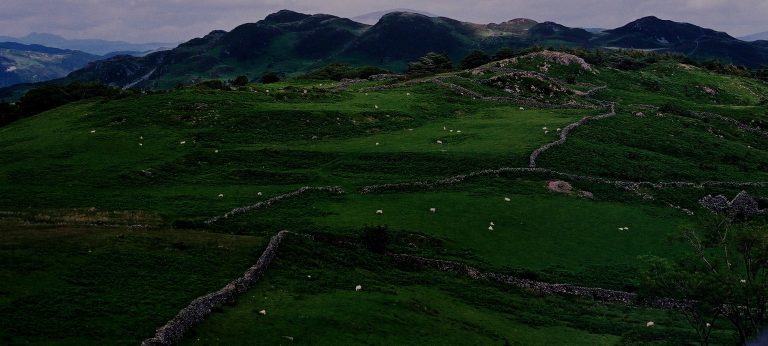What do we mean by ‘The Land on Which We Stand’? Why should we take the land into consideration?
Geology (the solid Earth, the rocks of which it is composed, and the processes by which they change over time) affects and infects the people who live upon it.
The Earths’ geology is alive and continuously changing, it is part of the ‘Living Earth’ as viewed by Earth System Science.
Earth System Science is the study of the Earth; not as a lump of dead rock, hanging in space but as a living entity in its own right. A study which includes all of the interactions that occur on this planet.
The geography of a place; the lands, features, inhabitants, and phenomena of an area is a physical product of its geology and climate. As a field of study geography bridges both social sciences and natural sciences.
Physiography is probably a better word, the ‘physical geography’ of an area. That tells you exactly where you are. It also tells you that you could be nowhere else.
This is Earth’s architecture, not governed by the hand of man. Amongst other things it helps to create the culture (the ideas, customs, and social behaviour) of the people who live on it.
Cultural Geography
There is now a ‘discipline’ (branch of knowledge) called ‘Cultural Geography’. This is the study of how different cultures are formed according to geographical (physical) characteristics, regardless of official political/legal boundaries.
People from a geographical region share the same culture (similar values, customs, practices, rituals, heroes, symbols) regardless of borders of any other making.
https://www.quora.com/What-is-cultural-geography-and-what-are-some-examples
This is probably demonstrated nowhere better than here in the UK; where physical geography varies enormously over very short distances.
Robert Thorson when writing the inaugural Geology .pdf entry for The Encyclopedia of New England (Yale University Press) wrote:
- For general readers: “If physical geography is the house in which regional culture makes it home, then geology is its foundation, plumbing, and wiring.”
- For historians: “Geology, the meat and bones of science, gave natural history the depth of time and the universality of process that would help transition European Calvinism into American Transcendentalism.”
- For poets: “The soul of New England perches on a rock.”
https://robertthorson.clas.uconn.edu/research-interests/cultural-geology/#
‘The Land on Which We Stand’ has a direct input into the lives that we lead.
Beyond the obvious (I certainly became fitter and lost weight when I lived in an area where everywhere that you walked was up or down a 1:3 hill), for most of us it is never a consideration that the ‘rock’ below our feet could govern who we are.
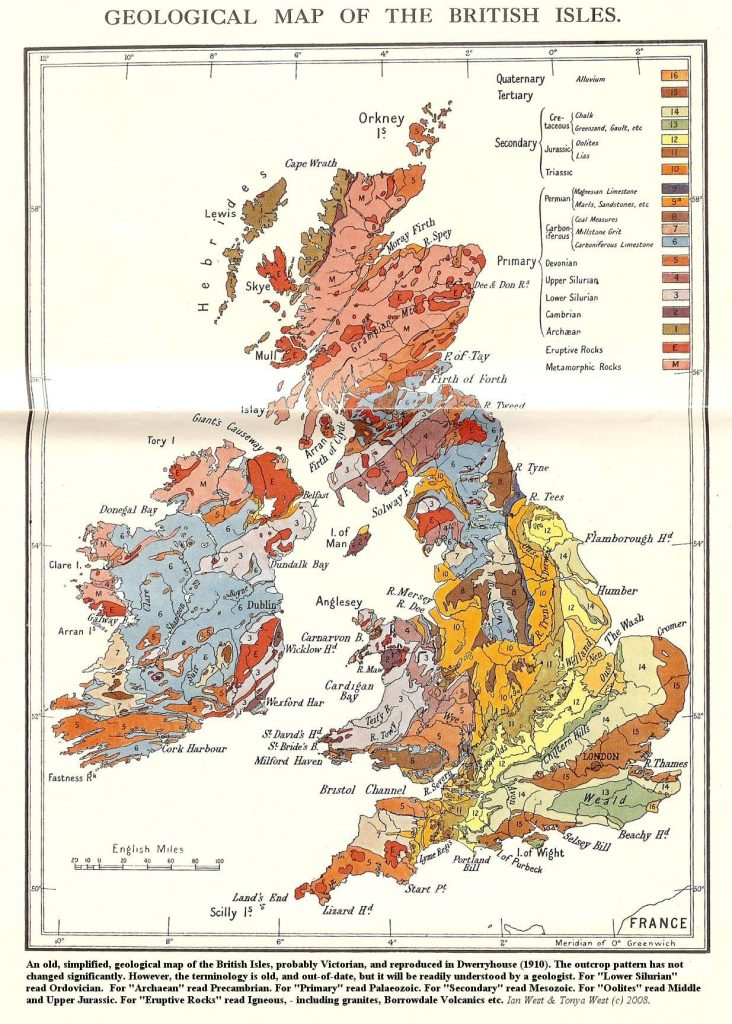
The geology (the Rock) could be likened to the ‘soul of the land’ – it is the ‘foundation, plumbing & wiring’ of our cultural house. Along with the physiography that it creates in allegiance with climate variations it helps to govern our values, customs, practices, our deities and our rituals. Our ‘more-than-human, more-than-textual, multisensual world’. https://merlepatchett.wordpress.com/2010/09/03/cultural-geography/
Cultural Diversity & Identity
The Isles of Britain have immense cultural diversity. Whilst some of this can be accounted for through the immigration and integration of other cultures over millenia, a large proportion can not; especially when looking at our ancient deities, customs & rituals. These can change rapidly, sometimes over distances as short as a few miles.
The Abbots Bromley Horn Dance – Staffordshire
GDPR Compliant
An Antlered Frontlet from Star Carr: a Mesolithic site dating from 9000 BC – https://www.starcarr.com/
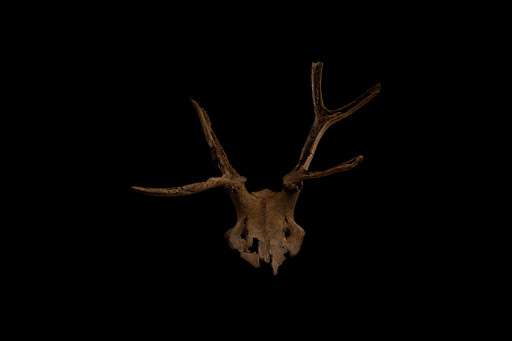
Looking at the geological map of the British Isles (above), considering how quickly the landscape can change from rugged coastline to deep forest, to mountains, rolling hills or open moors and anything/everything inbetween as a result, we can start to see why.
When ‘The Land on Which We Stand’ governs our culture it cannot help but to be diverse.
It actually runs much deeper than ‘culture’, going as far as ‘identity’. R. J. Stewart (a scholar of Brythonic Mysteries) asserted that for prehistoric peoples clan or tribal cohesion was not originally based on territorial frontiers or even on ‘blood kinship’, but was instead identified by “a particular inner pattern or harmonic of the land on which they happened to live”. (Awen: The Quest of the Celtic Mysteries by Mike Harris).
Being attuned to the land in this way is still borne out by Australian Aboriginal tribal elders. Our ancient ancestors obviously had this skill, a skill which on the whole we seem to have sadly lost.
Spiritual Connections
As human beings we are rooted in the ‘Living Earth’; we are the human version of organisms grown on a particular patch of land, we eat from that land and our mothers ate from that land, we were born of that particular patch.
The whole of planet Earth has a subtle major harmonic vibration; a measurable frequency called the Schumann Resonance. However superimposed on that major harmonic are minor harmonics; a harmonic pattern that is highly specific to a particular land-mass.
Scottish bagpipes use this very principle; the major harmonic is called the drone and the minor harmonics carry the melody. The melody is always in relationship with the drone. So each different land-mass has its own melody; its own subharmonics. (The Eagles Quest: A Physicist Finds the Scientific Truth at the Heart of the Shamanic World by Fred Alan Wolf).
It is this inner pattern or harmonic of the land to which our ancient ancestors and the Aboriginal tribal elders attune. All life on Earth is calibrated to the frequency of the planet; from our brain-waves & biorhythms to our states of consciousness. Living in urban civilisations has obscured this until most people are no longer aware of it; let alone able to pick up on the subtle changes that exist in certain areas.
Traditional wisdom and knowledge recognises this relationship which exists between every individual and the land.
The Anima Loci
In certain areas the melody (the energy) of certain land-masses may be particularly strong or beautiful, wild or charismatic; manifesting its spiritual nature with differing spiritual qualities.
This is the energy of Mother-Earth in her local form, the Earth Goddess, the Anima Loci (the ‘soul’ of a place, its essential personality), and it can be experienced by anyone. This connection with the wisdom of the Earth is vital for our survival and health; physically, mentally & most importantly spiritually.
Places that manifest these energies of Anima Loci, that ‘sing’ most noticeably seem to be features such as, mountains & hills, waterfalls, wells, lakes & springs, steep-sided valleys & rock outcrops, trees & old woodland; throughout the seasons displaying their varying properties.
As our ancestors were more ‘tuned in’ to these energies the places that they chose to put their standing stones, stone-circles & burial chambers may tell us as more about the landscape than anything else.
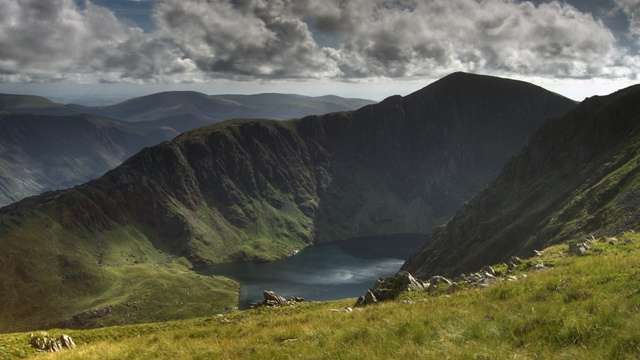
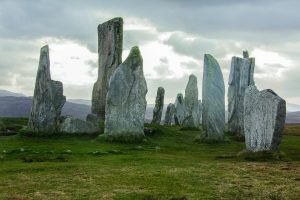
The energy of Mother-Earth in her local form is vitally important when it comes to connecting and working with the ‘Earth Goddess’. This is where the meaning of ‘The Land on Which we Stand’ comes into its own; for it is just that – the land on which we are literally standing.
This is especially important where you are on your ‘home-turf’. You were born to that land, you grew on that land, you are calibrated to that land. The energy of the land is Mother-Earth, the Anima Loci in Her local form and this is where things work, when they vibrate at frequecies that resonate with each other.
I will leave you with a quote from ‘The Eagles Quest: A Physicist Finds the Scientific Truth at the Heart of the Shamanic World’ by Fred Alan Wolf (1991 Touchstone)
I then realised what the connection between a sacred place and a shaman was. Shamans were able to use their healing powers best when they were working on the very grounds from which they grew themselves. Their vibrational patterns were more closely tuned to their home grounds. Shamans have tuned to their own sacred grounds throughout history and have evolved their own particular forms of rituals and healing.
Richard said, “So the native magic, and this is real physics, works best in its native country. All magic will work everywhere. But there are some places it will excel and some where it is spiritually useless. Qabala is useless in the Arctic Circle. There is no land there.”
Chris Hall added, “Believe me, if you get a Druidic person and stick them in the middle of the Sinai, and let them go through a ritual, it will be just so much garbage. But if you put them in the middle of Stonehenge, on the Solstice, you’ve got power”
You can read further thoughts on this subject on our page; The Land Beneath Our Feet
